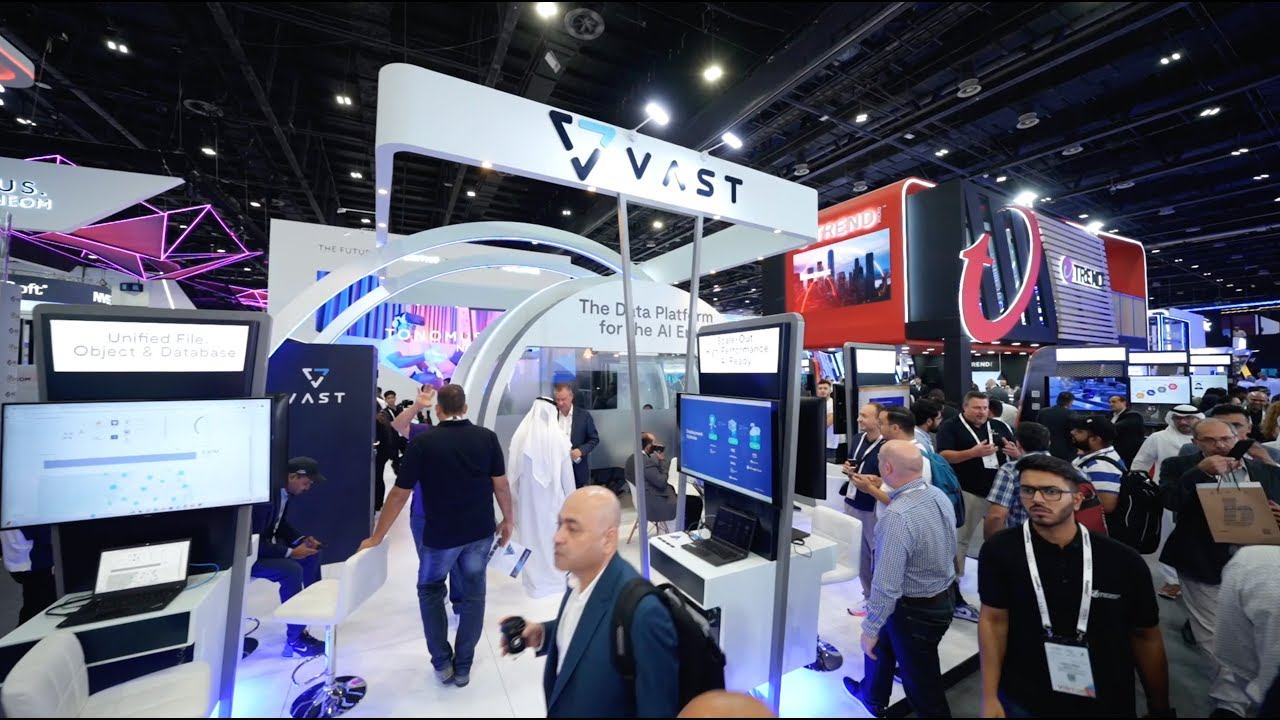𝐕𝐀𝐒𝐓 𝐃𝐚𝐭𝐚'𝐬 𝐩𝐚𝐯𝐢𝐥𝐢𝐨𝐧 𝐚𝐭 𝐭𝐡𝐞 𝐫𝐞𝐜𝐞𝐧𝐭 𝐆𝐢𝐭𝐞𝐱 𝐆𝐥𝐨𝐛𝐚𝐥 🇦🇪
As artificial intelligence continues its rapid evolution, a fundamental shift is underway in how enterprises approach infrastructure. 𝐓𝐡𝐞 𝐫𝐢𝐬𝐞 𝐨𝐟 𝐀𝐈-𝐧𝐚𝐭𝐢𝐯𝐞 𝐬𝐲𝐬𝐭𝐞𝐦𝐬 𝐢𝐬 𝐟𝐨𝐫𝐜𝐢𝐧𝐠 𝐜𝐨𝐦𝐩𝐚𝐧𝐢𝐞𝐬 𝐭𝐨 𝐦𝐨𝐯𝐞 𝐛𝐞𝐲𝐨𝐧𝐝 𝐥𝐞𝐠𝐚𝐜𝐲 𝐚𝐫𝐜𝐡𝐢𝐭𝐞𝐜𝐭𝐮𝐫𝐞𝐬, embracing platforms designed from the ground up to handle the scale, complexity, and performance demands of modern AI workloads.
For years, enterprise infrastructure was built around virtualisation and containerised applications, optimised for 𝐂𝐏𝐔-𝐛𝐚𝐬𝐞𝐝 𝐜𝐨𝐦𝐩𝐮𝐭𝐞 𝐚𝐧𝐝 𝐬𝐭𝐫𝐮𝐜𝐭𝐮𝐫𝐞𝐝 𝐝𝐚𝐭𝐚.
But today’s AI landscape is different. 𝐈𝐭’𝐬 𝐆𝐏𝐔-𝐝𝐫𝐢𝐯𝐞𝐧, 𝐝𝐚𝐭𝐚-𝐢𝐧𝐭𝐞𝐧𝐬𝐢𝐯𝐞, 𝐚𝐧𝐝 𝐢𝐧𝐜𝐫𝐞𝐚𝐬𝐢𝐧𝐠𝐥𝐲 𝐫𝐞𝐥𝐢𝐚𝐧𝐭 𝐨𝐧 𝐮𝐧𝐬𝐭𝐫𝐮𝐜𝐭𝐮𝐫𝐞𝐝 𝐚𝐧𝐝 𝐝𝐢𝐬𝐭𝐫𝐢𝐛𝐮𝐭𝐞𝐝 𝐝𝐚𝐭𝐚𝐬𝐞𝐭𝐬. This transformation is pushing organisations to reconsider their foundational technology choices.
AI-native infrastructure means building systems that are purpose-built for AI workloads — not retrofitting old ones” You need real-time performance, scalability, and manageability that legacy systems simply weren’t designed to deliver.”
It’s strategic. Enterprises are moving from proof-of-concept experiments to production-scale deployments. This evolution brings new priorities: security, governance, cost-efficiency, and data management. And it’s prompting a reimagining of the enterprise data stack.
